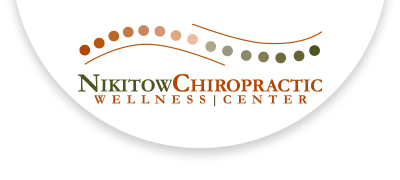Frequently Asked Questions in Englewood
Here are the answers to the most commonly asked questions about chiropractors in Englewood. Knowing the answers to these important questions will help you pick the best chiropractor in Englewood for you. If we didn't cover a question you may have, give Nikitow Chiropractic Wellness Center a call at (303) 773-8027 and we will be more than happy to help answer your question.
Why does my spine keep “going out”?
Spines do not go “in and out”, and chiropractors don’t put bones “in”. Otherwise, your doctor would be able to take an x-ray of your spine after the adjustment and show you its fixed. The fact is, adjustments decompress joint pressure, signal nerve receptors to override pain, and change the nerve muscle memory on how muscles contract and relax. The feeling on “going out” is based on the joint pressure, disc or nerve compression that occurs when muscles are pulling harder on one side than another due to the habits of nerve muscle memory. Once nerve muscle memory is changed the spine stabilized and doesn’t feel like it’s “going out”.
If I’m fixed why do I still need adjustments?
How does your spine “hold” once its fixed?
Why should I fix my spine if I have no symptoms?
Should my kids get their spines checked?
Why do you need to get adjusted so often?
Why can’t I just do exercises to correct my spine?
What are the best types of exercises for spinal correction?
What kind of problems can subluxations (spinal misalignments) cause?
How can I tell if I’m subluxated?
Are some people more susceptible to subluxations than others?
Can subluxations cause cancer?
What will happen if I don’t fix my subluxations?
Can animals get subluxated?
At what age should you start getting adjusted?
Are adjustments safe?
Do adjustments hurt?
Can MDs adjust your spine?
What is the difference between and D.C., a P.T., and a D.O.?
What is the popping sound?
Does adjusting your spine or knuckles cause arthritis?
Can I still exercise during my adjusting program?
Why can’t a chiropractor just put me in place with one adjustment?
Can chiropractic help a herniated disc?
When will the pain go away?
Can I tell if I have spinal problems by looking at my posture?
OFFICE HOURS
Monday
8:30am - 5:30pm
Tuesday
8:30am - 12:00pm
Wednesday
8:30am - 5:30pm
Thursday
8:30am - 5:30pm
Friday
Closed
Saturday
Closed
Sunday
Closed
Nikitow Chiropractic
Wellness Center
99 Inverness Drive East Suite 120
Englewood, CO 80112


